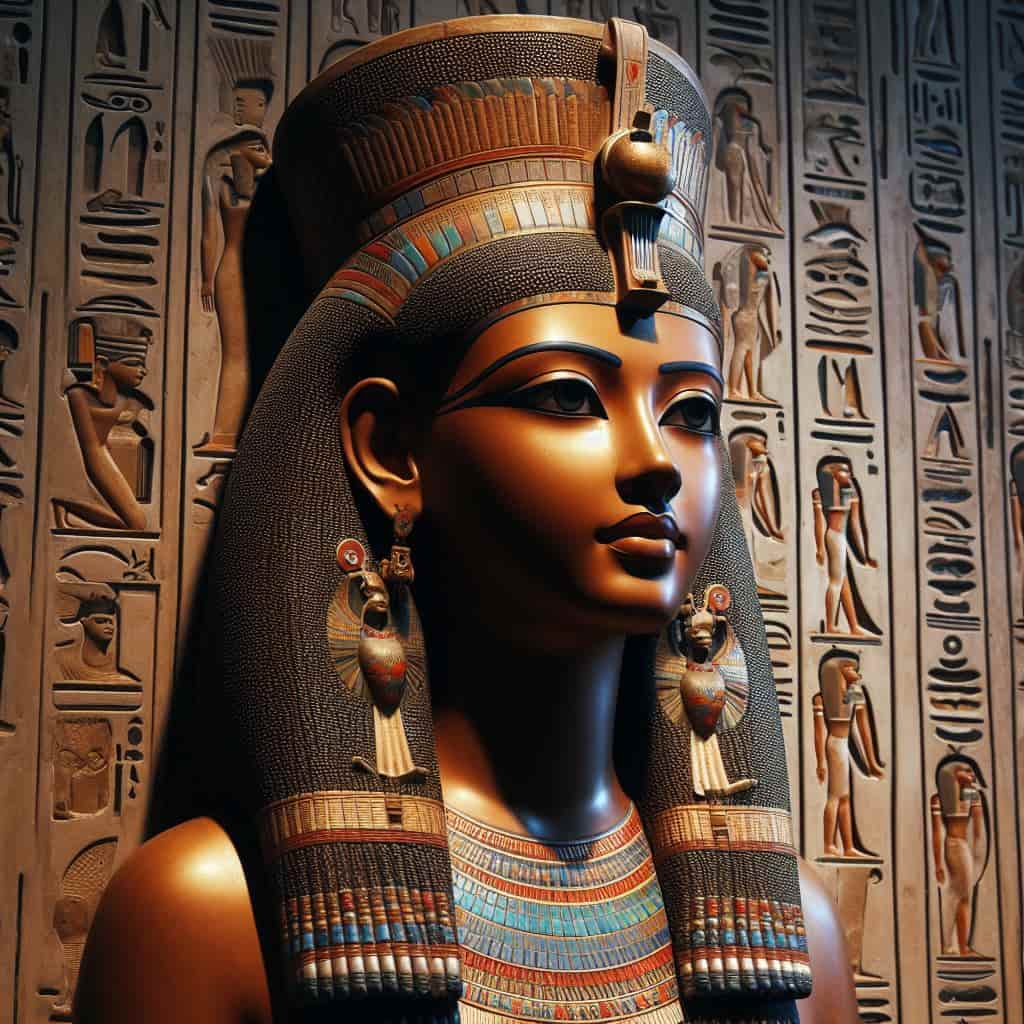Queen “Titi-Sheri” is considered the first of the descendants of queens from the end of the Seventeenth Dynasty. She belongs to a family of common people with two parents called Neferu and Djeni. She was fortunate when King Semkhet-en-Re Taa I took her as his wife, and she is famous as the Lady of the Two Lands, the mother of the king. She gave birth to a lineage of heroes for him, starting with King Seqenenre “Taa II” and then Queen Iahhotep, who began to spread love for the land and the spirit of the homeland in her, becoming a fighting queen on the battlefield until she became the grandmother of the brave King Kamose, King Ahmose, the conqueror of the Hyksos, and Queen Ahmose Nefertari, the special queen. She is called the Royal Mother, and includes the first queen to wear the eagle crown, who prefers her position as a complement to King Senkhet-en-Re (Taa I), her husband, who granted it to her.
Queen Titi Shri was not just a jealous mother on the homeland urging her children and grandchildren to fight. She only proved that she was an essential shield in the leadership of the state, performing the function of Minister of Defense, her own operations center, and her advisors from the administrative leaders, the Royal Military Council for Legislation, and the Council of Ten Elders.
They were fully aware of the thinker drawing, feeling, planning and ordering her children to lead the war of liberation after the martyrdom of her husband and her children to build her grandchildren to complete the liberation robot. When King Seqenenre was martyred, the brave King Kamose came forward and fought the war of liberation and achieved many victories, but the hand of suffering preceded and betrayed the brave hero to fall to the ground and finally what he spoke. Kames the brave, who was recommended by his brother Ahmose to be called the creative Titi-Sheri, is the right of his father Harb, and he died the death of Queen Seqenenre. This is the role of Titi-Sheri and her importance in the war of liberation, as she is the foundation, the thinking mind, and the mastermind of the liberation. Thus, the seventeenth company ends, and his brother, King Ahmose, begins the eighteenth dynasty and reigns. On the Hyksos, with the support of the grandmother, Titi-Shre, his queen, and now Iahhotep is known as Ahmose, the conqueror of the Hyksos. Queen Titi-shre-uel reigned during the era of King Ahmose, and Queen Titi-shre died reassured about the land and honor in safe, strong, courageous hands in the hands of her daughters, Queen Iyahhotep, and her grandson, the conqueror of the Hyksos, King Ahmose.
After the victory, her grandson, King Ahmose I, ordered the creation of a memorial plaque for his grandmother, Queen Tetsera, made of limestone in memory of her. It was discovered in 1902 AD, 225 cm high, reading 106.5 cm. On it was found written a conversation that took place between Ahmose I and Ahmose-Nefertari, mostly about what he had done for his ancestors. Especially his grandmother and his mother, he mentioned it, addressing the sky (truly, my mother’s mother, my father’s mother, his personal wife, and the royal hopes of Titi – late Sherri) came to my mind.
The tomb of “Titi-Sheri” in Thebes, in which she was buried, has not yet been revealed, and a mummy believed to be in an environment in Deir el-Bahari was discovered among a number of other mummies.



Comment (0)